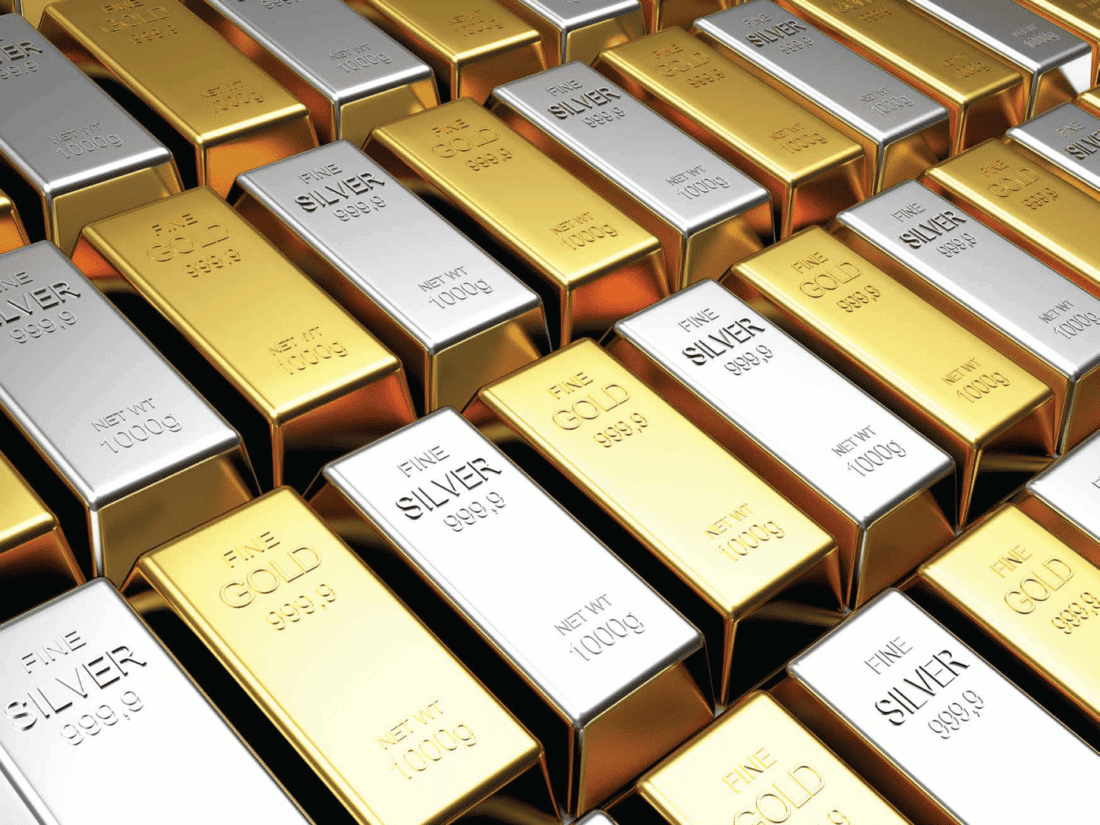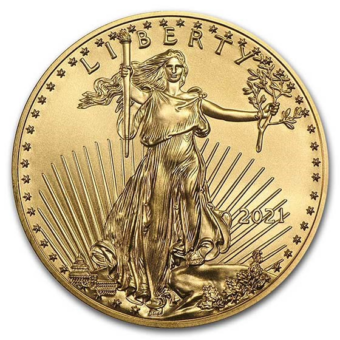A Daily Journey Through the Week's Market
Monday - 3.04.24: In early U.S. trading Monday, gold and silver prices experienced a slight decline, reflecting routine corrective pullbacks following recent gains. Gold had previously reached a two-month peak on Friday. Several external factors, including a small rise in U.S. Treasury yields and weaker crude oil prices, influenced the negative market sentiment at the beginning of the trading week.
Tuesday - 3.05.24: In early U.S. trading, gold and silver prices experienced an uplift, with gold reaching a record high of $2,135.80 in overnight trading and silver hitting a two-month peak. The uptick in precious metals is driven by market anticipation of more lenient monetary policies from major central banks, expected to boost metal demand and potentially weaken the U.S. dollar while reducing Treasury yields. Key upcoming U.S. economic data and Fed Chairman Powell's Congressional address are also eyed for their potential impact on the markets.
Wednesday - 3.06.24: On Wednesday, gold surged to a new record high, driven largely by market anticipation of U.S. monetary policy easing. The upward movement in gold prices was further boosted by a weakening dollar, which fell following comments from Fed Chair Jerome Powell hinting at a potential rate cut later this year, enhancing the attractiveness of gold as an investment.
Thursday - 3.07.24: Gold prices climbed higher in early U.S. trading amid record-breaking trends, supported by Federal Reserve Chairman Jerome Powell's dovish stance on monetary policy. Powell's comments spurred U.S. stock market gains, weakening the dollar index and lowering Treasury yields. Anticipation builds for Friday's key U.S. employment report from the Labor Department, expected to reveal non-farm job growth of 198,000 for February.
Friday- 3.08.24: Gold and silver prices surged to new highs, with gold reaching $2,187.50 and silver at $24.745, following a disappointing U.S. employment report. Despite the higher than expected job growth of 275,000, the report's weaker details, including a revised down January job number and a rise in the unemployment rate to 3.9%, suggested softer economic conditions. This has bolstered the case for those advocating for an earlier cut in U.S. interest rates.
U.S. Job Growth Surges in February, Unemployment Rate Edges Up to 3.9%
In February, the U.S. economy exhibited a robust addition of 275,000 nonfarm payrolls, surpassing the expectations of economists who had forecasted a growth of 198,000 jobs. This performance, however, came alongside a rise in the unemployment rate to 3.9%, as reported by the Labor Department. The increase in joblessness occurred despite the labor force participation rate maintaining its stance at 62.5%. Additionally, wage growth showed signs of slowing down, with average hourly earnings rising by a mere 0.1% for the month—slightly below the anticipated figures and representing a deceleration from the year-ago period. The employment gains were not evenly distributed across all job types, with a notable shift towards part-time positions. Health care, government, and the hospitality sectors led the job creation charge, while full-time employment saw a reduction. Despite these mixed signals, market reactions were muted, with Treasury yields experiencing a notable drop.
Gold Reaches New Heights Amidst Economic Expectations and Silver Joins the Surge
Gold achieved a new record high on Tuesday, largely fueled by the anticipation of U.S. monetary policy easing and ongoing geopolitical tensions, driving investment from momentum-focused funds. This surge is underpinned by a solid fundamental outlook, including robust physical demand from Asia, significant central bank purchases, and gold's enduring appeal as a safe haven. Central banks have consistently increased their gold holdings, marking eight straight months of net purchases. The rise in gold prices, touching $2,130.79 per troy ounce and peaking at $2,141.59, reflects a broader market optimism and technical momentum, potentially signaling more gains towards a Fibonacci projection level of $2,180.
The market's reaction, according to StoneX analyst Rhona O'Connell, has turned the rally into a self-fulfilling prophecy, attracting even more momentum fund investments. The near future, especially with forthcoming critical economic data and Federal Reserve Chair Jerome Powell's testimonies, is pivotal for gold's trajectory. Meanwhile, silver has also participated in the rally, showcasing significant growth and suggesting a more sustained upward trend in precious metals, despite platinum and palladium moving in the opposite direction. The divergence in performance highlights gold's dominant position and the potential for platinum to catch up once gold prices stabilize. Independent analysts project that gold could reach $2,300 within the year, contingent on expected Federal rate cuts, while gold-backed exchange-traded funds (ETFs) like the SPDR Gold Trust have seen a decline in holdings.
The Looming Crisis: Commercial Real Estate's Domino Effect on Banks
In 2024, the banking sector is facing a potential crisis, primarily triggered by the deteriorating state of commercial real estate loans. New York Community Bank's recent financial distress, marked by a staggering 80% stock price drop since January and a desperate bid to raise equity capital, serves as a stark warning. The bank's troubles stem from a significant portion of its portfolio being tied up in commercial real estate loans that have soured, a situation exacerbated by the pandemic's lasting impacts on office spaces and retail locations. This predicament is not isolated, with the commercial real estate sector at large poised for a historic downturn, highlighted by predictions of a trillion dollars in losses on office properties alone.
The crisis underscores a broader, systemic risk to the banking industry, with numerous banks heavily exposed to commercial real estate debt. The forthcoming expiration of a critical Federal Reserve program further compounds these vulnerabilities, hinting at a challenging road ahead for financial institutions. This emerging banking crisis is set against a backdrop of broader economic concerns, including anticipated layoffs and the impact of artificial intelligence on the workforce, painting a grim picture for the U.S. economy as it navigates through these tumultuous times.
Geopolitical Dynamics and US Policy: Catalysts for Gold's Continuing Surge
The gold market is currently at a critical juncture, influenced by key events in both the Middle East and the United States, according to the World Gold Council (WGC). The focus is on the upcoming Federal Open Market Committee (FOMC) meeting, expected to provide new interest rate forecasts, and the Iranian parliamentary elections. These events could significantly impact gold's price trajectory, with the metal already showing resilience by maintaining positive year-to-date returns in several major currencies, despite recent pressures from fluctuations in foreign exchange rates and a notable increase in US 10-year Treasury yields.
The anticipation surrounding the Federal Reserve's next moves and geopolitical shifts, especially in Iran, underscores the complex interplay of factors affecting gold prices. Iran's elections are noteworthy due to the country's substantial gold consumption and the potential geopolitical implications of a new Supreme Leader. Meanwhile, the Federal Reserve's decisions remain a focal point for investors, with uncertainties around interest rate directions adding to the market's volatility. As the global political landscape prepares for significant elections that could reshape geopolitical dynamics, the role of gold against geopolitical risks and its impact on supply constraints through recycling reduction becomes increasingly pronounced, setting the stage for potential price escalations.
BRICS De-Dollarization Strategy: A Risky Endeavor for Emerging Economies
As the BRICS nations (Brazil, Russia, India, China, and South Africa) push forward with their 2024 agenda for de-dollarization, concerns are mounting over the potential repercussions for both the alliance and other developing countries aspiring to join. Zimbabwe's former Finance Minister, Tendai Biti, voices significant apprehensions, arguing that moving away from the US Dollar could precipitate financial instability, particularly for nations with weaker economies. Biti's warnings underscore the risks associated with de-dollarization, highlighting the US Dollar's dominant role in global finance and the potential hazards of abandoning it prematurely. He cautions that while the BRICS countries might withstand the shift from the dollar due to their economic strengths, the same cannot be confidently said for developing nations, including Zimbabwe, which is considering joining the BRICS bloc. The ambition for a BRICS currency and the move away from the dollar, he suggests, are fraught with uncertainties and could lead to dire consequences for global trade and the financial well-being of the countries involved.
Fed Chair Signals Potential Interest Rate Cuts on the Horizon
Federal Reserve Chairman Jerome Powell, in his testimony to the Senate Banking Committee on March 7, 2024, hinted that the U.S. central bank could be nearing the point of reducing interest rates, given the current trajectory of inflation towards the Fed's target. Powell refrained from specifying an exact timeline for when rate cuts could commence but suggested that such a move could be on the near horizon, especially if inflation continues its downward trend towards the 2% target. His comments reflect a cautious optimism, emphasizing the importance of ensuring inflation is sustainably close to the target before considering easing monetary policy. This approach aims to avoid pushing the economy into recession by prematurely normalizing policy. Powell's remarks come amidst fluctuating market expectations regarding the Fed's policy direction, with the outlook shifting from an aggressive rate cut schedule earlier in the year to a more measured anticipation of rate reductions starting in June, amounting to a total of four cuts by the end of 2024. This potential policy shift aligns with recent inflation data that, despite a higher-than-expected consumer price index in January, shows a general slowing in the pace of price increases. Powell's statement underscores the Fed's current policy stance as appropriately calibrated to the economic indicators at hand.
Next Week’s Key Events
MONDAY, MAR 11
-
None scheduled
TUESDAY, MAR 12
-
8:30 am: Consumer Price Index (CPI) for February
WEDNESDAY, MAR 13
-
None scheduled
THURSDAY, MAR 14
-
8:30 am: U.S. Retail Sales for February
-
8:30 am: Producer Price Index (PPI) for February
-
8:30 am: Initial Jobless Claims for March 8
FRIDAY, MAR 15
-
8:30 am: Empire State Manufacturing Survey for March
-
9:15 am: Industrial Production & Capacity Utilization for February
-
10:00 am: Consumer Sentiment for March
IMPACT ON GOLD AND SILVER MARKETS
Consumer Price Index: The CPI measures inflation from the perspective of the consumer. A higher-than-expected reading signals rising inflation, which can lead to higher interest rates. Gold and silver often act as hedges against inflation, so their prices might increase with a high CPI reading.
U.S. Retail Sales: Retail sales are a primary gauge of consumer spending and economic health. Strong retail sales suggest a robust economy, potentially leading to higher interest rates to curb inflation, negatively impacting gold and silver prices due to their non-yielding nature.
Producer Price Index (PPI): The PPI measures inflation from the producer's perspective. Like the CPI, a higher PPI suggests rising inflation, which can increase gold and silver prices as they are considered safe-haven assets during inflationary periods.
Initial Jobless Claims: A significant increase in jobless claims indicates weakening employment conditions, potentially leading to lower consumer spending and economic slowdown. This scenario could increase the demand for gold and silver as safe havens.
Empire State Manufacturing Survey: This survey can signal the health of the manufacturing sector in New York State. A stronger manufacturing sector could boost the U.S. dollar, putting pressure on gold and silver prices as they become more expensive for holders of other currencies.
Industrial Production & Capacity Utilization: Indicates the production output and capacity utilization of the industrial sector. Increased industrial production suggests economic strength, potentially leading to a stronger dollar and lower demand for gold and silver as safe havens.
Consumer Sentiment: Reflects the overall health of consumer sentiment regarding the economy. Improved consumer sentiment typically signals economic strength, which could lead to higher interest rates, negatively affecting gold and silver prices.






















